Of Potions and Magic: Siquijor Island
I was clueless about what a few days in Siquijor would be like. Other than the unique picturesque photos that I picked up from Instagram, itineraries that suggest what to do and where to go, and countless tales of magic, potions and spell casting, nothing is much said about what an experience on the island is like.
When our boat from Dumaguete docked at the port of Siquijor, we were immediately greeted by a flock of people before we could even step foot on the ground, eager to welcome us to their coastline. It was getting dark when we arrived so we needed to rush and find ourselves a place to stay. I usually organise accommodation before hand but for once, I thought I wanted to be spontaneous.
People might think it was the worst place to be spontaneous. The island is after all infamous for some so-called ‘witchcraft’, ‘black magic’ and mystical traditions. According to stories from nearby towns, sorcery has been passed on from families to families living on the island and they say some visitors have been cursed after leaving the town. Mostly from misbehaviours. But I took a dash of courage and a handful of wanderlust to defy plenty of warnings about continuing the trip.
The moment we arrived, we took the service of a tricycle, the Philippines’ version of a rickshaw. We met the driver who eventually became our tour guide, he led us to a number of resorts until we, together with a bunch of backpackers, finally settled at Charisma Resort.
Just as dinner time came, we took a moment to leave the hotel, wandered a couple of minutes in this placid town until we retreated back to the resort with the disappointing reality that other than the hotel’s restaurant, there wasn’t any other place to eat nearby.
We walked back a few kilometers and as it was getting darker, the sound of crickets became louder, as if they were watching our every move, the sky, earlier painted with indigo has ombred and streaks of bats have started to appear. There were occasional motorcycles zooming on the long roads, but other than that the silence was both eerie and peaceful at the same time. There were street lights, but the light beaming from the moon overpowered any brightness coming from the posts.
I came not having any expectations so I had nothing to compare to the first impression I had that night. But I am one to give chances, so I slumbered hoping the next morning was more eventful.
I woke up to a hearty breakfast, basked in a little bit of sunshine and soon Glenn, our driver turned tour guide collected us up at the front desk and we hopped on the same tricycle we boarded the night previous.
I didn't bother asking about the places on the day’s itinary. I thought the less I know, the better it would turn out. He seemed to know the island quite well having been born and raised as a local so I resigned to his plan.
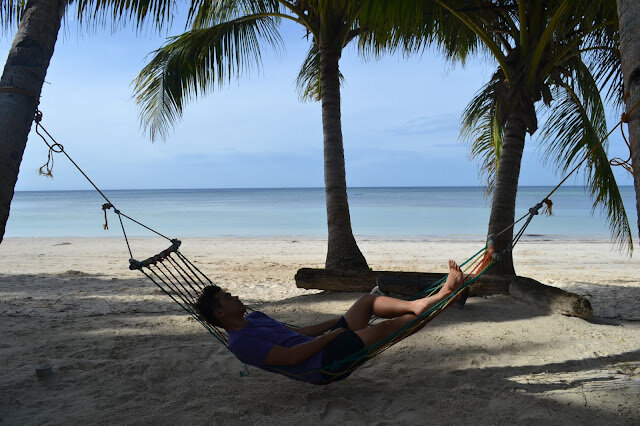
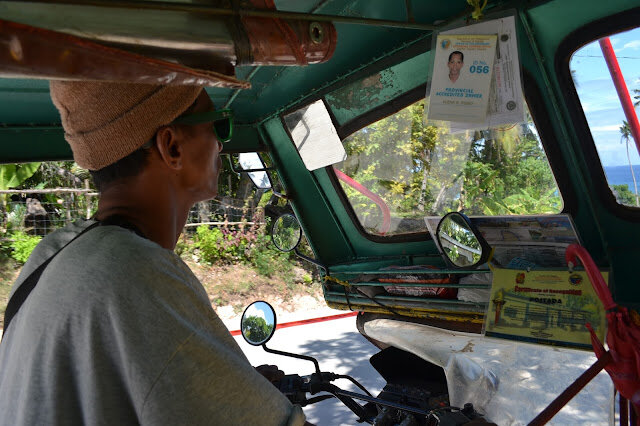
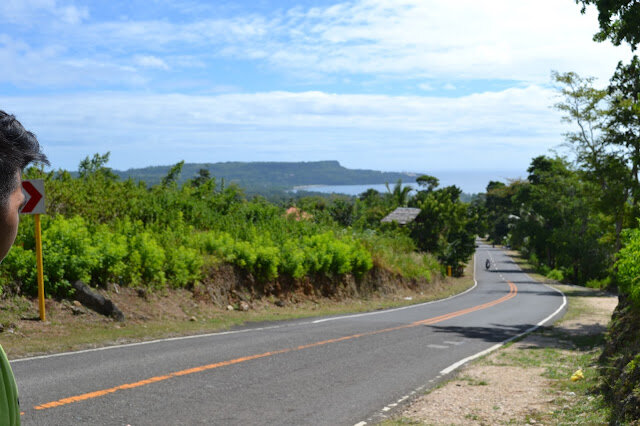
We had long rides in between stopovers and the road seemed neverending. The thought of how troublesome it could be if we were to be stuck in the middle of this road lowkey freaked me out. We had been driving for a while and we were getting further and further away from the town centre. All I could see was a paved road in between wide vegetation.
Siquijor is an old and rural town considered to be of the fifth income class but remarkably has one of the highest literacy rates in the country. It's culture is deep-rooted from the Spanish era and reflections of those remain alive up until now.
A century-old Balete Tree that stood tall at the foot of a spring was what came immediately into my gaze. They call it, “The Enchanted Tree”. In Filipino folklore, mystic and horror stories are always paired with Balete Trees, believed to be homes to unfriendly spirits. The elders would worry at the thought of me getting closer to the tree but whatever spirits were believed to reside in this tree have probably already drifted away as this place has grown in popularity.
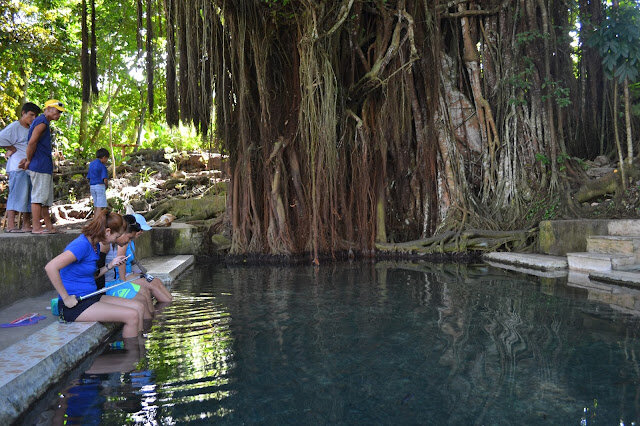
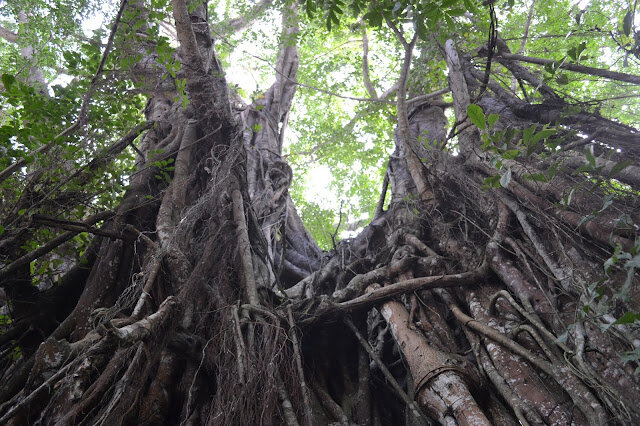
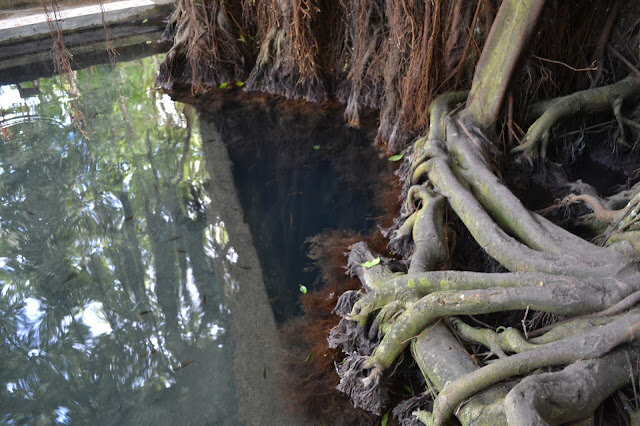

The locals thought it would be a great idea to populate the pool with fish and turn the spring into a foot spa. While the novelty of that idea was great, I was frantic to see massive Tilapia fishes instead of tiny little Garra Rufas for a fish pedi. While some people enjoyed it, I withdrew from being devoured by them, instead, I wandered around a little bit more until it was time to go.
Every time I am close to a body of water, I feel like I am in my elements. It gives me a different energy, probably because I have spent so much of my childhood at the reef around my parent’s hometown.
The moment I learned that we were driving towards Cambugahay Falls, I could not be happier.
A series of small waterfalls as if artistically created to cascade waters from one to another. I hurriedly removed my shirt and plunged into the waters until I found a rope tied to one of the old trees at the riverside. I instinctively ran to the side, pulled the rope made out of thick vines and splashed my way to the light jade coloured stream.
As usual, I did not know what the following day’s itinerary was and so we drove again to a nearby town until we reached Salagdoong Beach. The white sand covered the vast portion of the beach with a few areas dominated by large rock formations.
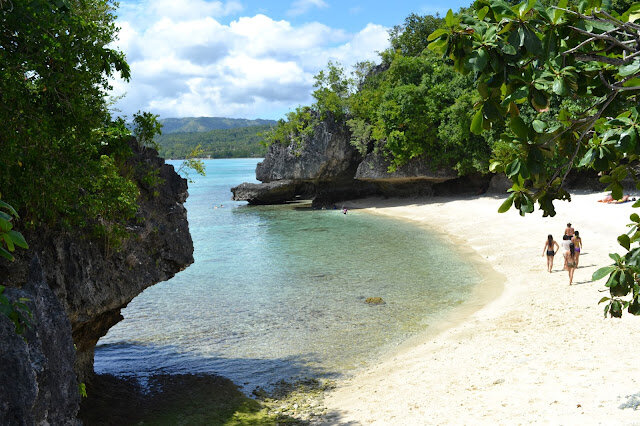
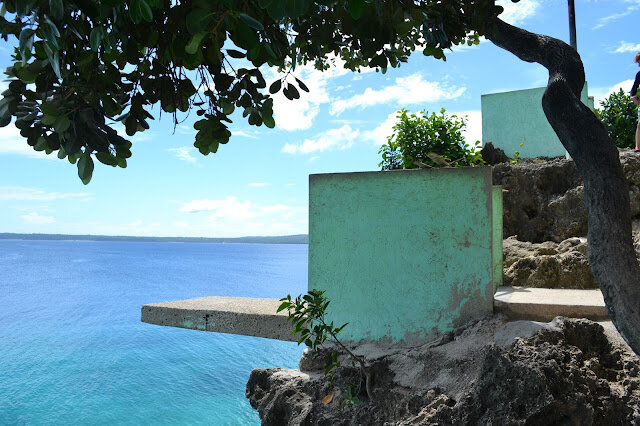
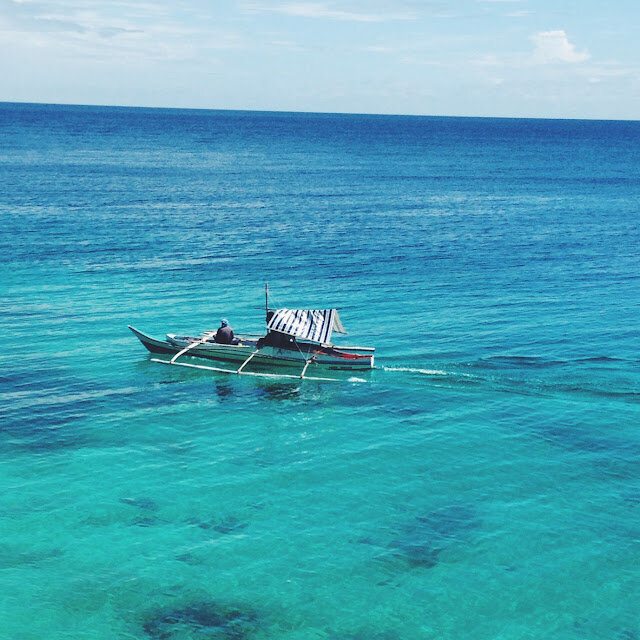
The water was pristine, the wind was gentle and the waves were calm. I was lucky that the tide was low that day so cliff jumps were not permitted. I would have otherwise been tempted to jump off from a three-story high cliff out of my self-induced pressure, a sporadic attempt to unleash the daredevil in me.
The lush greenery surrounding the beach was calming, the crystal clear water was too inviting, so much so that I couldn’t not indulge myself from diving into the deep waters surrounding the islets. It was a moment that years later is still fresh in my mind.
My tan grew many shades darker from spending hours at the beach, it was invigorating and replenished all the energy I needed. It was a paradise any castaway would find total bliss to be at.
When we were back on the road later in the afternoon, we got to pass by what seemed to be Siquijor's delicacy, Pan Bisaya (Bisaya Bread) where a small hut was hoisted at the roadside serving as the town's "cafe".
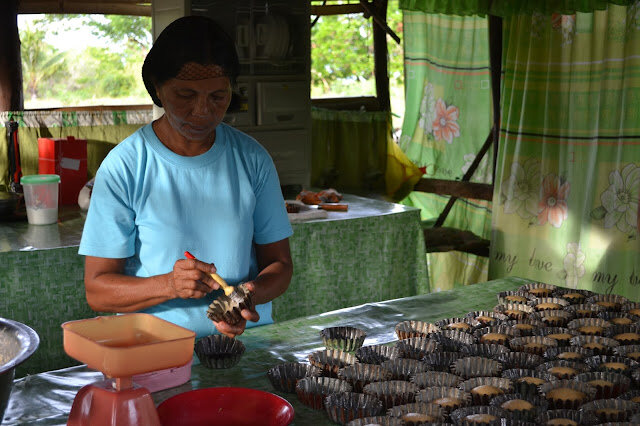
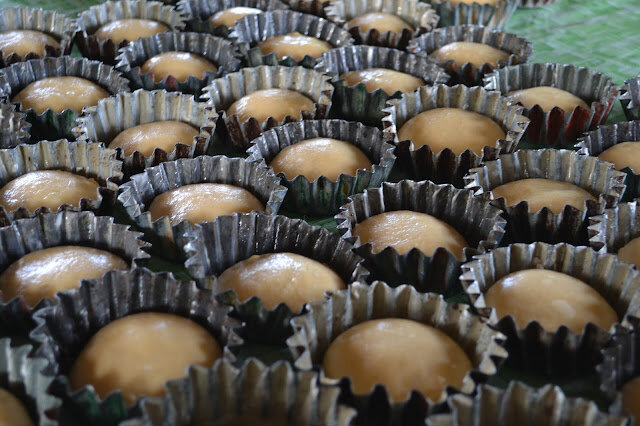
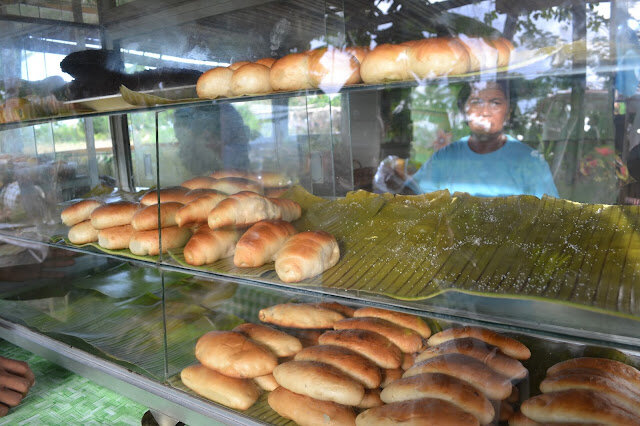
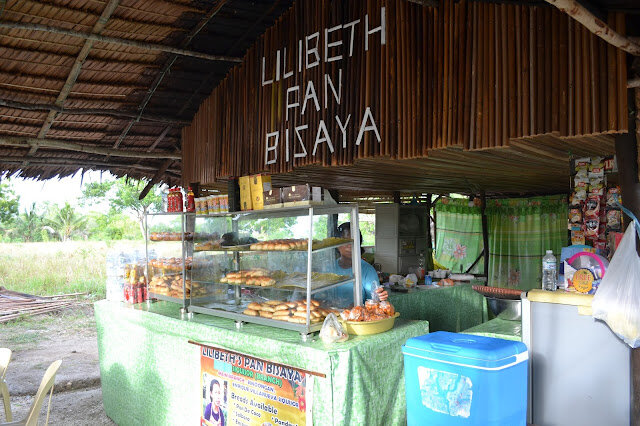
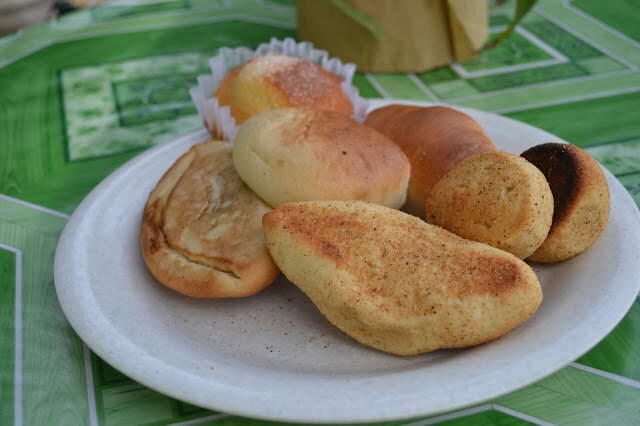
Motorists, visitors and locals would drop by to enjoy a cup of coffee and a bite of some of their freshly baked pastries in this humble hut. I spoke to the women who were busy baking bread that afternoon and impressed with their ingenuity to turn what used to only be a household staple into a delicacy their town could offer to generate income.
The sun was about to set and so Glenn suggested that we head to the Guiwanon Spring Park, a Mangrove sanctuary that resembles a little bit of the fantasies of Neverland. We climbed to the treehouse that’s usually rented out for overnight stays. I sat there while waiting for the golden yellow glow to fade. At that very moment, I couldn’t imagine being anywhere else. The sunset was hypnotizing, perhaps from the island’s magic. I couldn’t help but be mesmerized by a beauty often overlooked by many. We have seen thousands of sunsets, yet no two sunsets are ever the same. I have never really come to that conclusion before, not until I spent that moment at that treehouse, nested in twigs of mangroves, on an island I was warned about.

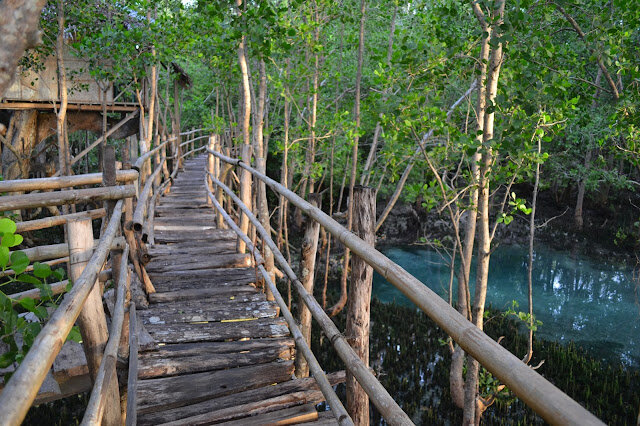
The skies were slowly turning to indigo once again and the ombre withered until the moon has took its place. It was time to go home.
I have not proven whether or not the stories of witchcraft and sorcery, that of which the island is known for, are true. But if there is one thing I know, it is that wherever you go, treat the people and their place with respect and kindness, with or without the fear of being cursed. Besides, to me, the only magic this island possesses is its magnificent natural wonders, the tranquillity it offers and the spell it casts on people making them want to keep coming back.







